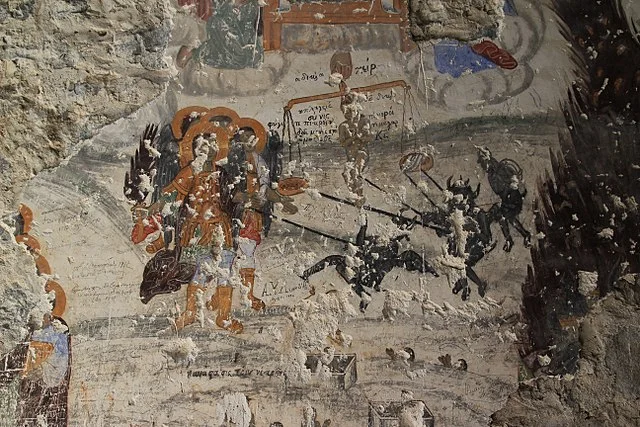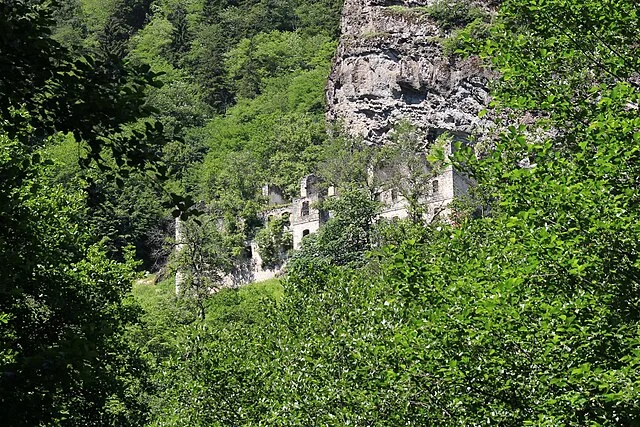Vazelon Monastery, located in the Pontic Mountains of northern Turkey, is one of the oldest monasteries in the region. Established around AD 270, it predates many other significant Christian sites in Asia Minor. Its remote location, about 40 kilometers south of modern-day Trabzon, served both practical and symbolic purposes. Vazelon is known for its strategic isolation, which helped protect it from frequent invasions and conflicts in the region. However, it also became a major target for invaders due to its wealth and influence over time.
Get your dose of History via Email
Historical Background

The origins of Vazelon Monastery date back to the early Byzantine period. Historians believe that the initial structure was dedicated to John the Baptist. During the late Roman Empire and Byzantine Empire, monasticism spread rapidly in Asia Minor. Vazelon Monastery became a key center of Christian worship and theological learning. Its establishment in the 3rd century AD marked the beginning of a monastic legacy that would shape the religious landscape of the Pontic region for centuries.
Throughout its history, Vazelon served as a refuge and educational center for Christians. By the 5th century AD, the monastery had gained substantial wealth. This prosperity continued as Vazelon expanded its influence and acquired lands through donations from wealthy patrons. The monastery’s wealth allowed it to undertake building projects, enhance its defensive structures, and amass an extensive collection of manuscripts.
Architecture and Art
The architecture of Vazelon Monastery reflects various historical phases and styles. Although the original structure from the 3rd century no longer exists, later renovations reveal distinct Byzantine architectural features. The current ruins primarily date from the 10th and 13th centuries, showing the development of Byzantine design elements over time.
Vazelon’s frescoes are among its most significant artistic contributions. The interior walls feature well-preserved religious frescoes dating back to the 14th century. These paintings depict scenes from the New Testament, as well as various saints, martyrs, and monastic figures important to Orthodox Christianity. The vibrant colors and detailed artistry demonstrate the monastery’s cultural significance and its role in preserving Byzantine art.
Role in Religious and Cultural Life
For centuries, Vazelon Monastery played a vital role in the religious life of the Pontic region. Monks at Vazelon dedicated their lives to preserving religious texts, educating new generations of clergy, and supporting local communities. The monastery became an influential site for theological study, contributing to the spread of Orthodox Christianity in northern Asia Minor.
In addition to its spiritual role, Vazelon Monastery became a cultural hub. It was a site where local traditions and religious practices merged. The monks collected and transcribed religious manuscripts, some of which would later contribute to the larger Byzantine corpus. The monastery also participated in land management, agricultural production, and trade, which helped support local economies.
Challenges and Decline
Vazelon Monastery faced many challenges throughout its history, primarily from external threats. During the Arab invasions in the 7th and 8th centuries, it suffered considerable damage. However, it continued to function and remained active, with periods of restoration and rebuilding that allowed it to survive.
The 14th century brought renewed challenges as the region came under attack from Turkic forces. The monastery sustained significant damage during these raids, leading to a temporary decline. However, it was rebuilt and regained prominence under the patronage of local rulers. The Ottoman Empire’s rise in the late 15th century further shifted the political landscape, leading to more difficulties for Christian monasteries in the region.
Vazelon Monastery persisted through various hardships until the early 20th century. By this time, its monastic population had dwindled, and political tensions between the Ottoman Empire and Christian communities further strained its resources. In 1923, the population exchange between Greece and Turkey led to the abandonment of Vazelon Monastery, as the remaining monks and Christian inhabitants of the region were relocated to Greece.
Present Condition and Preservation
Today, Vazelon Monastery stands in ruins, but efforts to preserve its remnants have increased. Visitors can still see portions of the monastery’s main chapel, residential quarters, and frescoes. However, its remote location and lack of consistent maintenance have left it vulnerable to environmental and human damage.
Preservation efforts aim to document the monastery’s architectural and artistic heritage. While the site remains challenging to access, Vazelon Monastery continues to attract scholars, historians, and visitors interested in Byzantine history and early Christian monasticism.
Source:

